"There's Gold in them thar' deeps...."
said the Auk Bay fisherman.
Final part of the ss Islander saga............or is it?
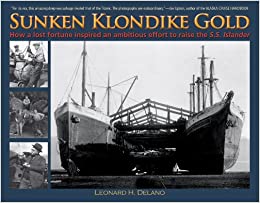
"The Canadian Pacific Company's purser aid there
wasn't anything on the boat, just a little bit in his safe."
While nobody's sure what's down there, that hasn't
stopped people - a great many people - from trying to find it...
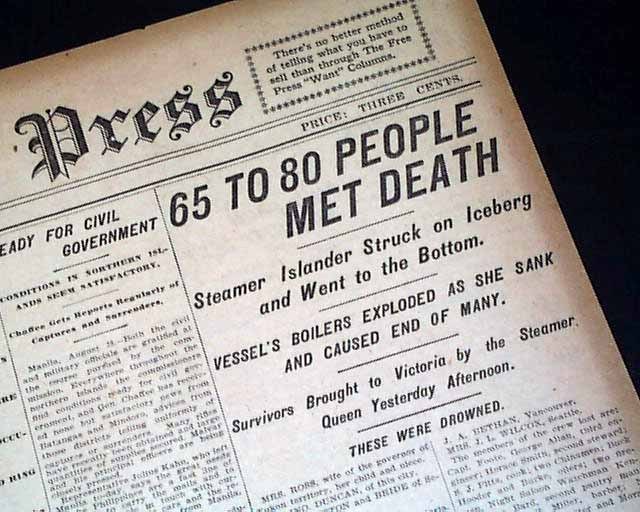
"The pilot was so drunk, they had to hoist him onboard in a cargo
sling....."
"When Islander got underway that day, her stern lines were still secured
to the bollards on the Skagway quayside....."
"The pilot was using the steam whistle to bounce echoes off the shore to
port.........."
The captain was playing cards with two ladies in the saloon when she
struck......."
"We saw fir trees go by our window shortly before she struck....."

The precise location of the ss Islander's
sinking.....
Puget Sound Business Journal......
OceanMar Inc of Seattle, having
first obtained a 'Salvage Agreement' from the Salvage Association of London,
raised sufficient capital in the USA and UK, to charter a suitable vessel, the
MV Jolly Roger out of Santa Barbara, and mount a properly equipped
expedition. Sailing from Tacoma Seattle, where the ship had been extensively
fitted out, Ted Jaynes, founder and President of OceanMar, Commander Nick Messinger,
Master Mariner, Royal navy
submariner and former deep diving operations manager; Ian Blamire, another
Englishman and Managing Director of Sea Eye Marine of Gosport, had high
expectations of salvaging Islander's bow section and recovering the
elusive gold bullion and ore in concentrate. The three men, all former employees
of InterSub - International Submarine Services of Marseilles, France, were
highly experienced professionals, and with an extensive sidescan sonar suite,
high-tech Sea Eye Marine 'Surveyor' ROV (remotely operated vehicle) and surface
and subsea acoustic navigation and tracking systems, they were the most well
equipped expedition thus far. On arrival Juneau, alongside the jetty and taking
on fresh water, the Jolly Roger was boarded by a US Deputy
Marshall, who served a Temporary Restraining Order, obtained by another salvage
company, Yukon Recovery of Seattle. Yukon claimed rights to the wreck on the
basis that they had removed a light fitting and a bottle, under the law of
'finder's keepers' and the Abandoned Shipwreck Act. OceanMar, having spent over
seven years extensively researching the Islander disaster, claimed that
the wreck had never been abandoned and that their Salvage Agreement with the
original insurers, therefore took precedence. OceanMar were also able to
demonstrate that they had located the bow long before Yukon appeared on the
scene. A visit to Anchorage and a meeting with the judge, fortunately an expert
in maritime affairs, resulted in permission being granted for OceanMar to survey
and video the wreck site, but on the strict understanding that nothing would be
removed. Somewhat demoralized at the turn of events, Jolly Roger
and
her crew set sail, and spent the next five weeks on site, recording every aspect
of the bow section and side-scanning the debris field, between the original
point of impact and the final resting place. They were on site in the Gastineau
Canal, on the 95th anniversary of the sinking, 15th August 1996. There then
followed four long years of expensive legal battle with Yukon Recovery,
resulting in the US Court of Appeal For the 9th District, finding in favour of
OceanMar on 7th March 2000, Case Number 98-36015.

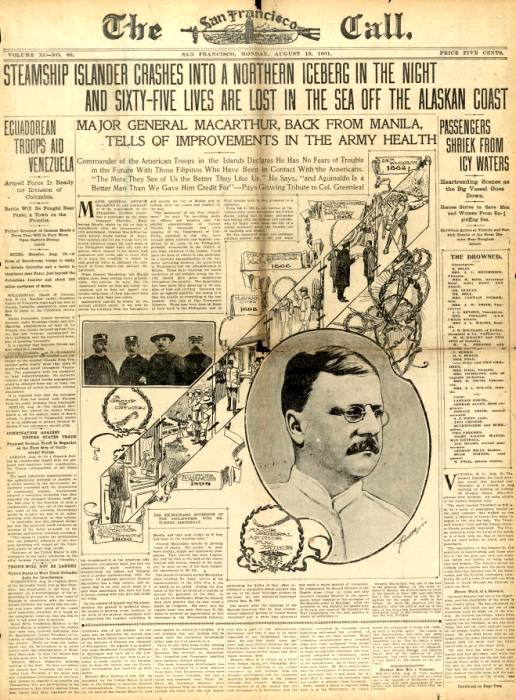
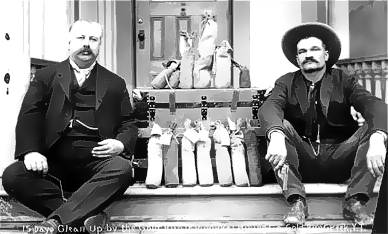
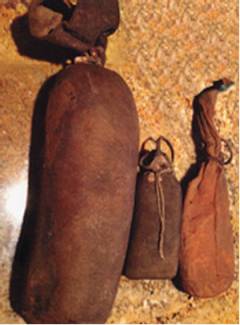


Is this all
there is?
Debate rolls on as to
whether the ship was actually carrying several tons of gold bullion and gold ore in
concentrate - as claimed by Ted Jaynes of OceanMar.
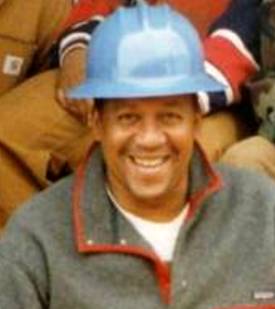
Jaynes has been
searching for the elusive cargo for nigh on a quarter of a century.....
He claims to know
where the gold is......
But....as
he was to discover....all that
glistens is not gold.....
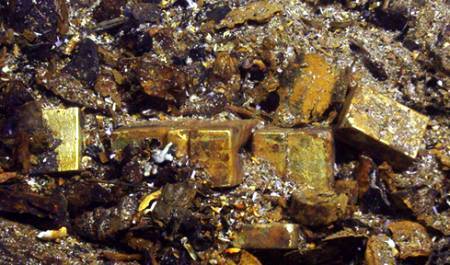
In a 2007 court filing, Ocean Mar said its research had indicated that
at least six tons of gold bullion in 25 to 30 wooden boxes was stored in a
passenger cabin. It also said it had found what it believed to be bullion boxes
near shore, no deeper tha, n 200 feet........But
what was initially thought to be boxes of bullion during dives at the site that
year turned out to be "glacial boulders having the same or similar size and
shape of bullion boxes," according to another court filing.

"We spent a great
deal of time inshore, searching for the elusive gold bars that Jaynes claimed to
have seen on previous expeditions. But on closer inspection, it was revealed
that the 'glinting' gold, was in fact, nothing but slabs of granite adorned with yellowish marine algae...."
Ted Jaynes maintained he saw a gold bar back in 1994 - but when
we put the sub down on the location he had logged - there was nothing there -
just a bunch of rocks.........
Jaynes' screamed 'Someone's pirated my claim!'
He then broke out
the ship's bottle of emergency brandy, and proceeded to drown his sorrows.
He was livid but, like with so many other aspects of the project, he was only
seeing what he wanted to see - ignoring any advice to the contrary - including
that of the Kline sidescan sonar expert, who had joined us from the TWA 800
crash site off East Moriches.Jaynes had his own theory regarding the Islander
sinking, claiming to have see 'scuff marks' on rocks, close inshore, which had
caused the ship to veer off course, listing heavily, depositing iron bound pine
boxes, which punched a hole through the cabin side, before sliding across the
tilting deck, and dropping overboard.
By 1996,
Ted Jaynes had become paranoid, and delusional. Perhaps the writing had been on
the wall for some time.......The following is a treasure hunter's description of
the 1994 'Islander expedition'.
"Yes, I was there in 1994 as the Captain of the search/salvage
vessel
I was hired by Ted Janes of Ocean Mar to locate, lease, outfit, and operate a
suitable vessel for the season. We based out of Seattle.
We leased an '85 steel vessel, twin 8V71 detroits (loud as ****). It was
originally a gulf shrimper but had the outriggers removed for use as a salmon
tender. It was suitable for our needs because it had a large open deck for
equipment (ROV with scanning sonar, a crane, winches, hard hat dive compressor
and HP air bank of T bottles, etc) as well as sufficient space in the hold for
provisions and other equipment along with the "command center" for ROV and dive
operations.
There were 6 of us on board. Besides Ted and myself, there were 2 experienced
commercial divers, a second skipper, and a kid that I will generously call a
deck hand.
It was an exciting trip and we were very close to where it was eventually found,
but we came up short that season.
5 days non-stop up the inside passage from Seattle to Douglas Island, then the
real fun began.
Actually, it was expected to be a real challenge and it was! The tides run hard,
the water is deep and rocky. It is no easy task to get properly moored close
alongside a rocky shore in 150'-200' of water. A three point mooring no less!
We had a DOE HD2+2 ROV (for anyone who is familiar with ROVs of that era) that
was powerful enough to drag a person overboard with its umbilical. It was a
pretty high end work ROV and was equipped with a Reson SeaBat multi-beam
scanning sonar for navigating the murky water and locating targets. And of
course powerful lights and video camera.
It was pretty hairy work and we worked several days at a stretch, only breaking
off to seek shelter in a nearby cove when the weather got too bad for the
anchors to hold.
Week after week and the stress took a toll on everyone, especially Ted who was a
pretty pompous ass to start with. By the time we got to the end of the vessel
lease period, Ted was coming unglued. He was convinced that everyone was
plotting against him, even a long time friend who was one of the divers.
Privately, the two divers and second skipper and I agreed to make every effort
to keep him calm and focused on the project. We tiptoed on eggshells just to try
and avoid serious conflict.
We came up empty and had to return to Seattle. Ted never really recovered his
attitude and made enemies of everyone. As far as I know, I was the only person
being paid and even though I had a written contract, he failed to deliver my pay
as agreed. I tried unsuccessfully to get him to honor the contract for a couple
years and eventually had to file a lawsuit to get paid. I also had a signed
contract pledge of 1% of any treasure eventually recovered but Ted had the only
copy so that was gone like dust.
Honestly, I don't think he every really recovered. Treasure hunting and gold
fever can turn people into obsessed lunatics, that has been known for
generations. Now I have seen it in person and it ain't pretty!
There are days where I wonder what I could do with $40K from my 1% share. Then
again, I got us all back safely and have great memories of the good parts and
with stories to tell about the bad parts. Can't put a dollar value on that.
Glad I ran into the stories of the gold that was recovered by the latest team
(that only includes Ted as a footnote), it brings back some interesting and
vivid memories, some good, some not.
On a slow bell, that's how I take life now......
THE DETROIT FREE PRESS, Michigan, August 19, 1901
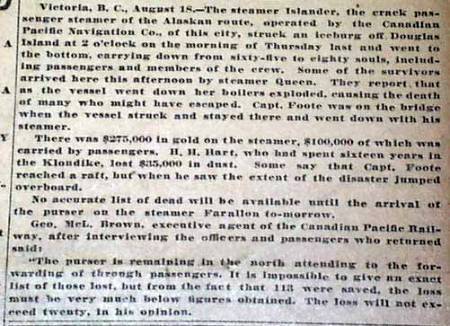
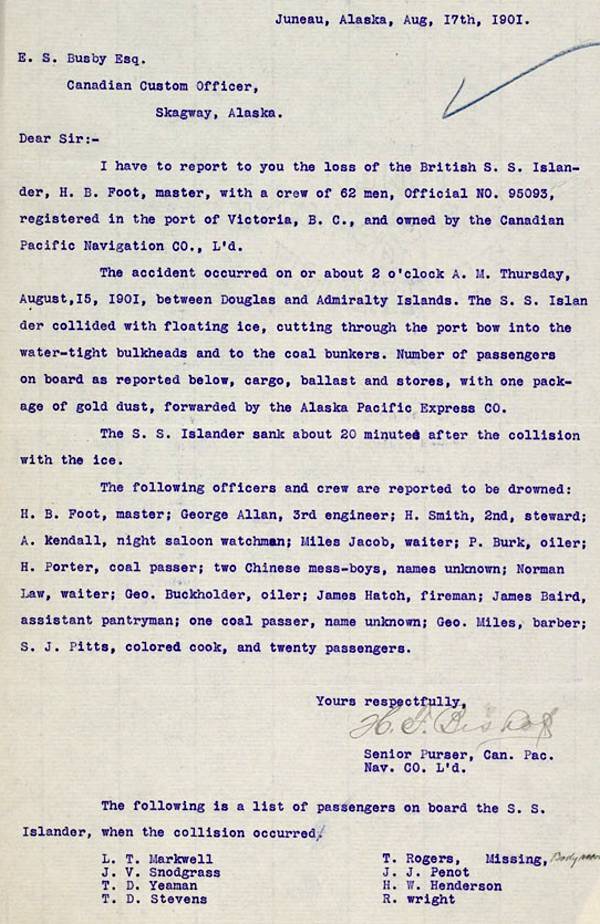
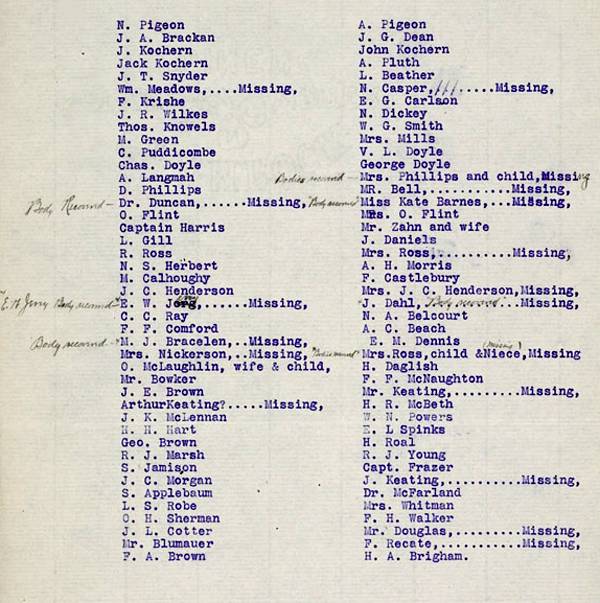
Such are the potential perils of
the inland passage of the Pacific Coast that the findings of the Court of
Inquiry into her sinking stated that the Islander was in thoroughly
seaworthy condition when she left Skagway
on the evening of August 14, 1901. She
was a total wreck eight hours later, resting in 110 metres of water after
striking drifting ice near Juneau, Alaska. In total, 40 lives were lost.
Following the accident, the
Vancouver Daily World reported that after striking the ice, the evacuation
effort was calm and collected and the Islander's officers and crew
"acquitted themselves nobly of their duty".
Upon recovery of the victims'
bodies, the inquest in Juneau concluded that the deaths were accidental, with no
one at fault.
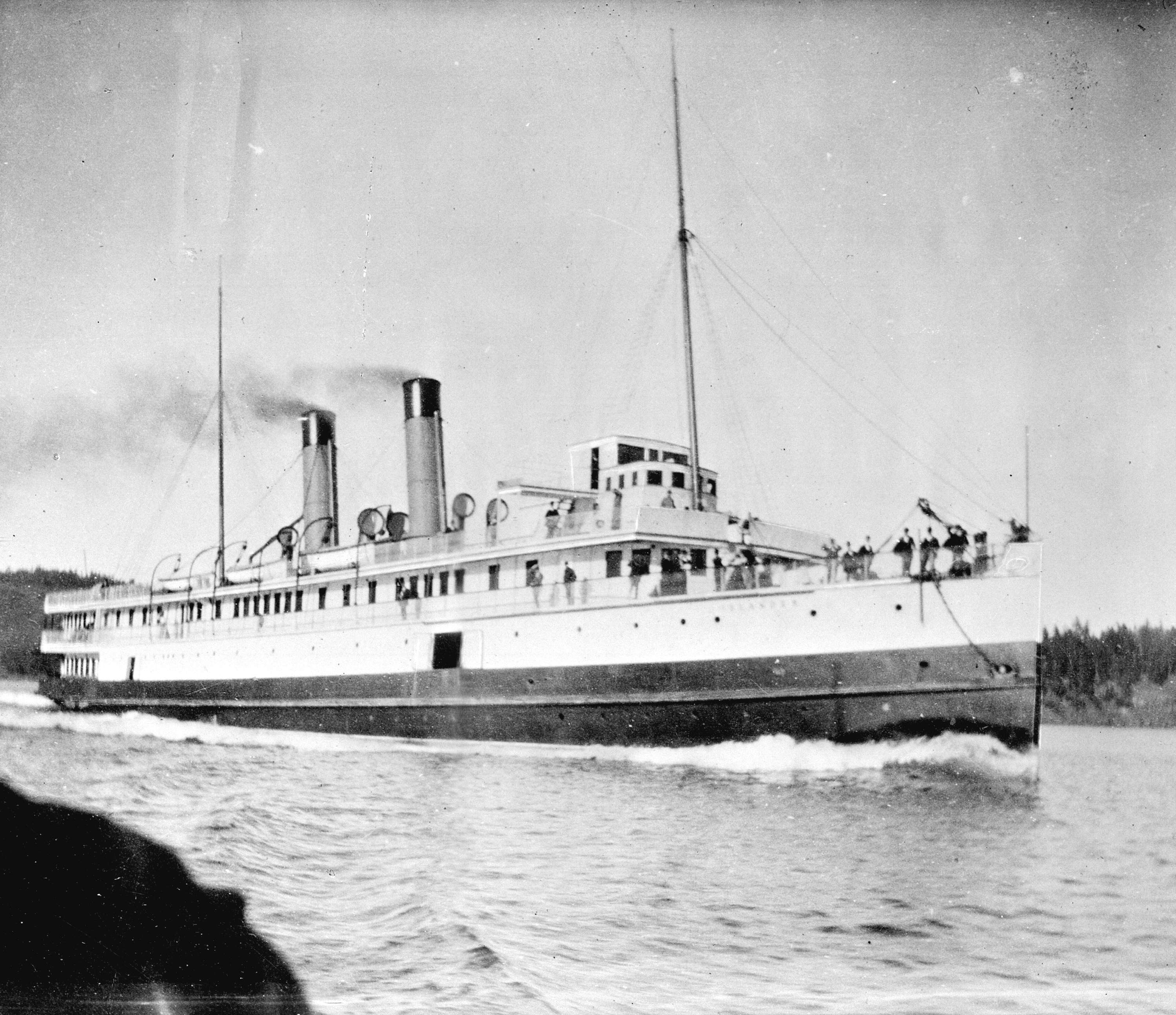
The Canadian Pacific Navigation
Company's S.S.Islander, launched by Napier Shanks &
Bell of Glasgow in 1888
The subsequent official inquiry may
well have reached similar conclusions had not new information been uncovered by
a diligent King's Council. The Commission of Inquiry began in Victoria on
Wednesday September
4, 1901 and initially the witnesses were mainly crew members
whom the commission refused to allow to be cross-examined. The Commission
recessed at lunch on Friday, stating they would meet again on the
following
Tuesday afternoon, September 10th, to pronounce a verdict, should no further
witnesses come forward.
On Monday September 9, 1901, King's
Council E.V. Bodwell acknowledged receipt of his instructions to appear at the
inquiry on behalf of the government. He immediately won an adjournment to allow
time to
produce new witnesses from among the
Islander's passengers. He
also secured the right to cross-examine the conduct of the crew and to take
other measures to ensure that the inquiry was not seen to be helping
the company
to "whitewash its officers."
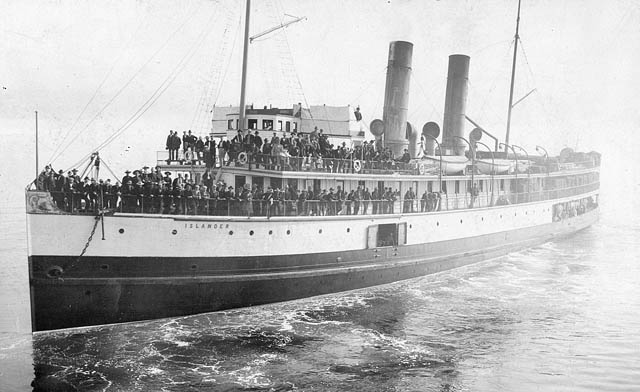
The new witnesses painted a very
different picture than what had so far emerged, testifying that the sinking was
accompanied by confusion and chaos. Passengers in their cabins were not informed
there had been
an accident; the captain was alleged to have been inebriated; and
half-empty lifeboats containing crew members left the ship, leaving passengers
stranded on deck. Only after the inquest had finished, when the
North West
Mounted Police inquired into compensation for lost goods, was it discovered that
not all of the crew members were licensed for their profession.
The final, three-page finding of
the inquiry was, among other items, critical of the Captain for not ensuring a
proper quota of people per boat and for not realizing the imminent danger that
the ship was in. However,
a short handwritten paragraph was inserted into the
document, stating that the loss of the Islander was not due "to the
intemperance of the Master or Officers."
Reports of lucrative amounts of
gold on board the sunken ship led to many early salvage efforts and several
lawsuits.
The findings of the inquiry into the
sinking of the Islander included the following:
"We
find that no special instructions had been issued by the master [captain] to
the pilot, or person in charge of the deck, when he left the bridge,
relating to the navigation or speed of the vessel in the
event of
falling in with floating ice - which was not unexpected in the locality
through which the ship was passing. We think that Pilot Le Blanc is open to
censure for his action in keeping the ship full speed -
at the rate of
nearly fourteen knots an hour - after having seen floating ice some ten
minutes before the accident.
We would also
condemn the custom apparently in vogue in coast waters in leaving the bridge
of any steamer at night, and more especially a passenger steamer, in charge
of only one officer......
The main portion of the hull was discovered in 1934, but the bow
section, where the gold was apparently located, eluded searchers until 1996, when it was
located and identified by Commander Nicholas R Messinger
RD*, RNR, Master
Mariner and Fellow of The UK Nautical Institute, 95 years - and almost on the
hour of its sinking .

How a Lost Fortune Inspired an Ambitious Effort
to Raise the S.S. Islander
When the 240-foot SS Islander hit an
iceberg in Alaska's inside waters just twelve miles from Juneau, Capt. H.R.
Foote decided to make a desperate run for nearby Douglas Island. But it was too
late. Water was
pouring into a huge gash in the port bow. The stern was rising.
The pride of the Canadian Pacific fleet quickly sank. Sixty-five of the 176
passengers and crew were lost, including Captain Foote, whose final words
were:
"Tell 'em I tried to beach her." The newspapers had a field day. Gold worth $3
million was rumored to have been put aboard in Skagway. There was talk of a
salvage operation, but for thirty-three years the
passenger vessel lay out of
reach in 350 feet of water. In 1933, Seattle and Portland house-mover Frank
Curtis proposed a bold salvage plan using two lift vessels, giant winches,
diving bells, tidal power, and a
determined crew of thirty or so house-movers,
loggers, and rigging mechanics. Curtis was backed by a group of businessmen
including future Weyerhaeuser Timber Company president Norton Clapp, who later
invested in construction of Seattle's Space Needle. Accompanied by eighty-five
extraordinary photographs and illustrations, this is an insider's story of a
two-year struggle to raise the Islander, a record-breaking
salvage that focused
on a single prize - an elusive fortune in gold.
Leonard H. Delano of Portland
worked on the Islander salvage crew and was its official photographer.
Later, he
worked as a motion-picture cameraman for the 1938 film 'Call of the Yukon.'
Delano died in 1989. His son, Doug, fulfilled his late father's dream in 2011
with the publication of this excellent book.
_loading_for_Klondike_1897.JPG)
SS Islander, outboard, loading for the Klondike gold
fields at Victoria BC in 1897
This is a story with more
twists and turns - and probably more intrigue - than that of the RMS Titanic of
the White Star Line, which sank, amidst much
publicity, in 1912. The SS Islander belonged to another great
British
institution: the mighty Canadian Pacific Navigation Company. She sank eleven years before the Titanic, almost
anonymously - just another victim of the weather and the treacherous waters of the infamous
Inside Passage, the notorious stretch
of Pacific between British Columbia and Alaska.

Seattle, 1901
The SS
Islander, was serving the Inside Passage between Alaska and Seattle, and was
south bound out of Skagway when she struck what was reported to be an iceberg
and sank in the Lynn Canal, south of Juneau
on August 15th, 1901. Carrying
miners, business men and dignitaries home from the gold fields, her cargo was
reported to be millions of dollars in gold. In 1934, she was raised from the
seabed, and beached on
Admiralty Island. Despite employing teams of gold
prospectors, nothing of substance was found inside the main hull.
"Examination of photographs taken at the time, revealed an unexplained mystery:
the whole bow section of the ship - from the stem bar to the passenger
accommodation forward bulkhead - was missing! According
to statements made by
the Royal Canadian Mounted Police Constables who were onboard to guard the
shipment, the gold bullion was stowed in a locker on the port side of the
forward well deck, just abaft the
break of the focsle. "An area located within
the 'missing' hull section, which remained missing until August 1996, when we
located what remained of the steelwork, using sidescan sonar and a Remotely
Operated
Vehicle." Nick Messinger 1996
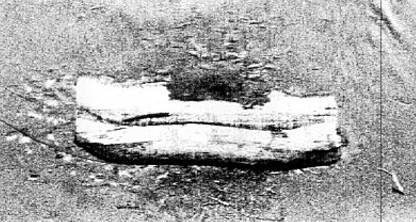
Sidescan Sonar Image Showing Bow
Section and Debris
This web page
is dedicated to our ROV Pilot, my friend Ronnie Farmiloe, an old boy of
Charterhouse School, who could cook the most marvelous Sunday roasts, who was
tragically murdered, in Thailand.

Ronnie Farmiloe, ROV Pilot and
gentleman. Ronnie's 'baby', Sea Eye Surveyor ROV
But now back to that awful night,
15th August 1901, and the words of a local newspaper man: Mr Charles Ross, one of the survivors of six people who were dressed and left on
the deck of that ill-fated vessel to look out for themselves as best they could
when she plunged into the depths of the sea, gave us the following sketch of the
sad disaster. The time is so young and his feelings so tender that we did not
care to be too inquisitive. “The vessel has set sail from Skagway the evening
before, and at 2.15 a.m. or 1.15 Dawson time, the ship struck. They were in bed,
and feeling the shock he arose, but in a few minutes an officer passed their
room door and told them there was nothing the matter. Mrs Ross lay down again,
but in a few moments he heard something like chopping, going on above and went
on deck. The largest and best lifeboat had then left with eight of the crew on
board, and the boat would have carried forty people. He hastened to his room and
told Minnie to hurry up, there was danger. Dressing as quick as possible they
went on deck. The last boat was then leaving the vessel and was not thirty feet
away; they called to the men to return but they would not. They then put on life
preservers and in a few minutes the vessel went down. They did not step off the
vessel as has been reported, but went into the water as the vessel went down, in
fact stood in the water when they were putting on their life preservers. Mr Ross
never spoke to Minnie afterwards. When in the water he called to her but no
answer came. When the first boat landed, volunteers came up afterward and took
the boat to hunt for bodies, or anyone floating on rafts or what they could
find. The sailors would not return. Mr Ross was in the water nearly three and a
half hours before being picked up, and it was 9 o’clock a.m. before he regained
consciousness. He was nearly dead from cold. He had gotten hold of a piece of
wreckage and kept his head out of the water. Mrs Ross was picked up floating
among the wreckage. There seems to have been some sort of explosion as the
vessel went down, and no doubt some of the dead were struck by wreckage as all
the bodies recovered were bruised. It is said that fully sixty to sixty-five
people were drowned. The Officers did not call anyone from their berths.”
The Mighty Canadian
Pacific
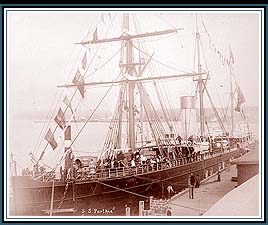
Canadian Pacific has
a unique Canadian history. It was founded in 1881 to build a transcontinental
railway linking Eastern Canada with the Pacific Coast. The railway, completed in
1885, united a young nation and paved the way for a century of growth and
development.
CPN was incorporated in 1883 and
endured until 1901 - shortly before the wreck of the Islander - when Canadian
Pacific Railway acquired the firm and made it an important part in the basis of
CPR’s marine division, later to be known as Canadian Pacific Steamships Ocean
Services, Ltd.
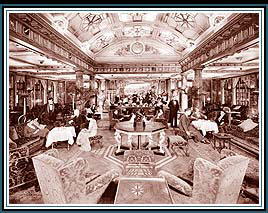
SS Empress
of Britain's "Mayfair" Lounge, 1933
Today, Canadian
Pacific Limited is a diversified operating company active in transportation,
energy and hotels. The Canadian Pacific group of companies includes Canadian
Pacific Railway, CP Ships, Pan Canadian
Petroleum, Fording and Canadian Pacific
Hotels. Canadian Pacific's shares are listed on the Toronto and New York stock
exchanges under the symbol "CP". Headquartered in Calgary, they are active in
every
province in Canada with their strongest concentration of assets in Western
Canada, particularly in Alberta and British Columbia.
SS
Islander - Pride of The Canadian Pacific
The ss
Islander was a 240
x 42 x 14ft steel-hulled, twin screw passenger liner whose Dunsmuir & Jackson
triple expansion steam engine was rated for 15 knots.
Prior
to the unhappy event, and before commencing service on the lucrative
Vancouver - Skagway service in 1892, she served as the principal ship for
transporting Vancouverites to Victoria and Victoria residents to
the Lower Mainland.
The Islander was designed by Captain
John Irving
(1854-1936), the then General Manager of the Canadian Pacific Navigation
Company, and completed by early 1888, to begin its lengthy journey from the
U.K.,
across the Atlantic, around South
America and Cape Horn and North to San Francisco, then on to Vancouver, where
she arrived towards the end of December.
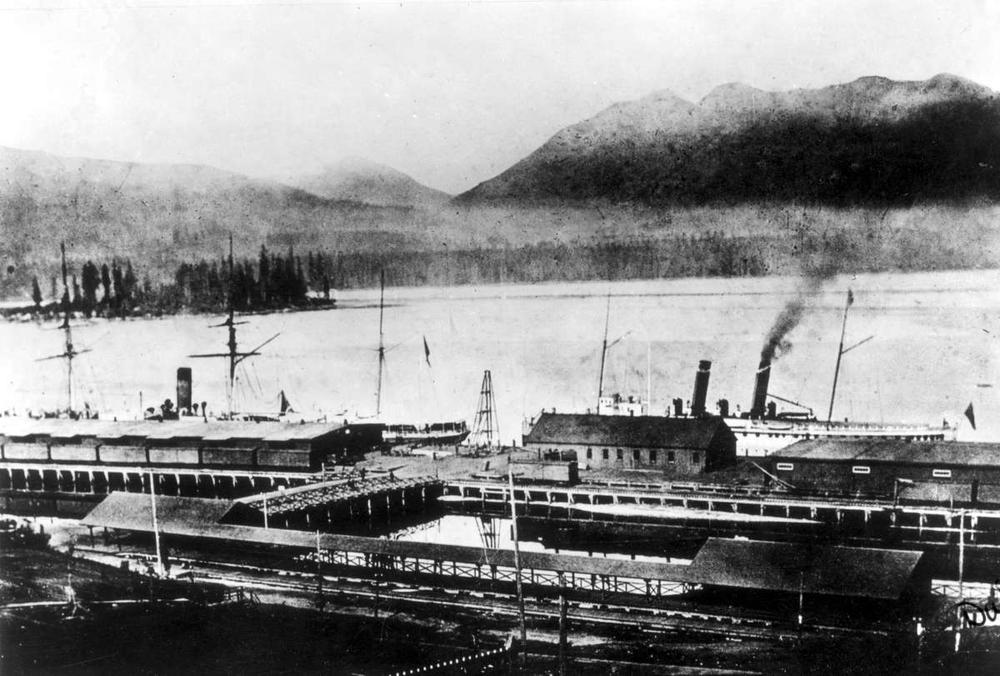
S.S. Abyssinia or Parthia, left and
Islander, right, with the first Canadian Pacific Railway station in foreground,
Vancouver. BC Archives
The Vancouver World newspaper described the
steamer (somewhat incongruously) as both a “Gulf of Georgia Greyhound” and a
“Floating Palace”. It’s status as Greyhound of the Gulf was established in it
making
the Victoria-Vancouver sailing (from
harbour to harbour) in just over 4 hours.
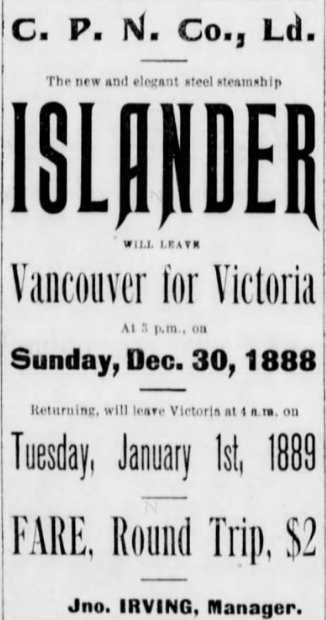
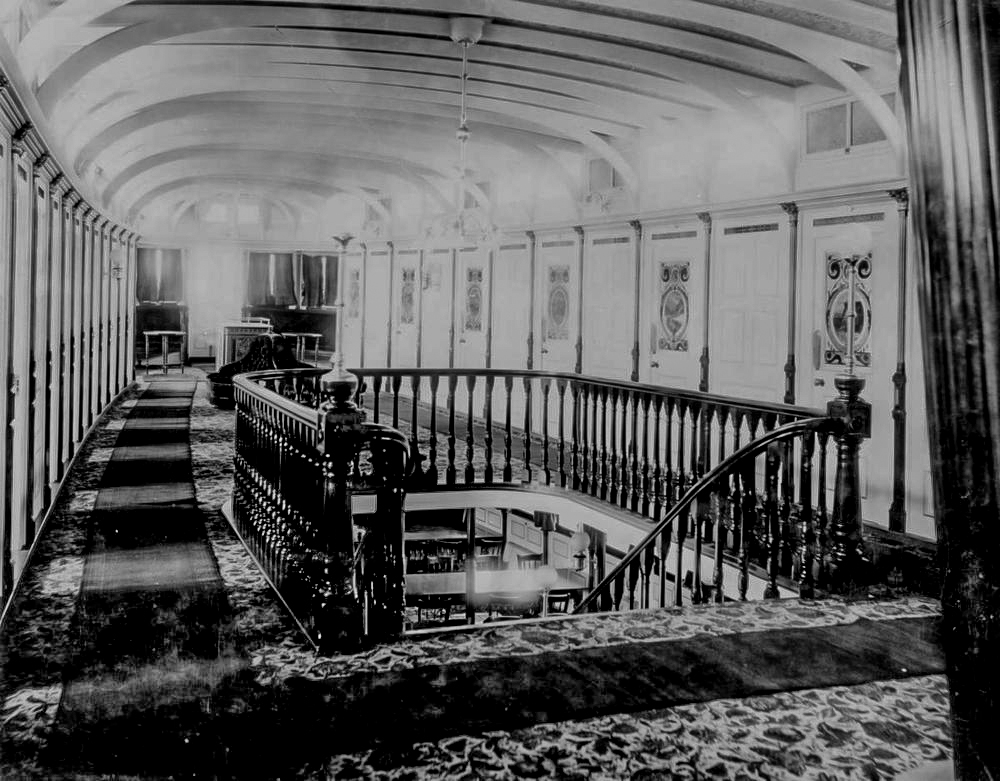
ss Islander Central
Staircase
The
dining saloon could seat 76, with the Canadian Pacific Navigation’s monogram
carved into each chair. The linen, silver and plateware were apparently among
the best that money could buy. The staterooms
were fitted out
with electricity, a call bell, a lavatory, and 'an abundant supply of water'.
There were two bridal state rooms, and all told, the cabins could sleep a total
of 130 people.
The
upholstery throughout the Islander was reputed to be of “the most
recherche description” and the
ceilings were “elaborately ornamented with carved work and
lincrusta of beautiful design”.
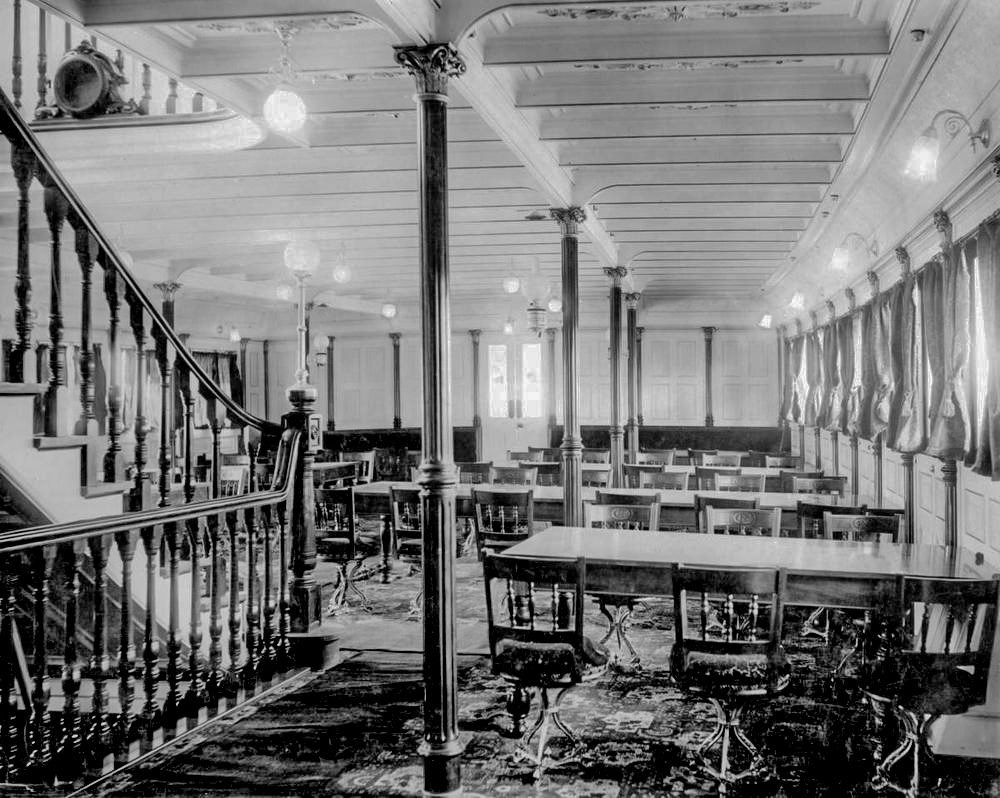
ss Islander's
spacious dining saloon
She was intended for the
sixty-hour Inland Passage schedule to Skagway, and was reputedly the most luxurious
steamer engaged on that run. As a consequence, she was the favoured ship for the many
wealthy businessmen, speculators, bankers, railroad tycoons and the like who had
a stake in the lucrative Klondike gold fields.
_in_Esquimalt_BC_drydock_1890s.JPG)
Islander in Esquimalt BC Drydock in the
1890s

Islander having
propellers repaired on beach at Sitka, July 25, 1892.
Alaska State Library Historical Collections, PCA 297-205.
_loading_for_Klondike_1897.JPG)
SS Islander -
outboard - loading at Victoria BC for the Klondike in 1897
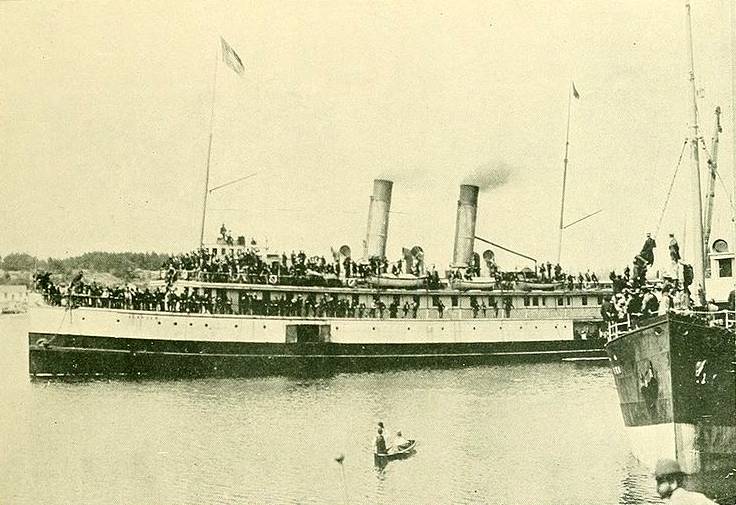
SS Islander -
leaving Victoria BC for the Klondike in 1897
The Islander's Special Day
Islander was one of the most popular ships on the Inside
Passage run and on 30th January 1893, celebrated her 1000th trip between
Victoria and Skagway.
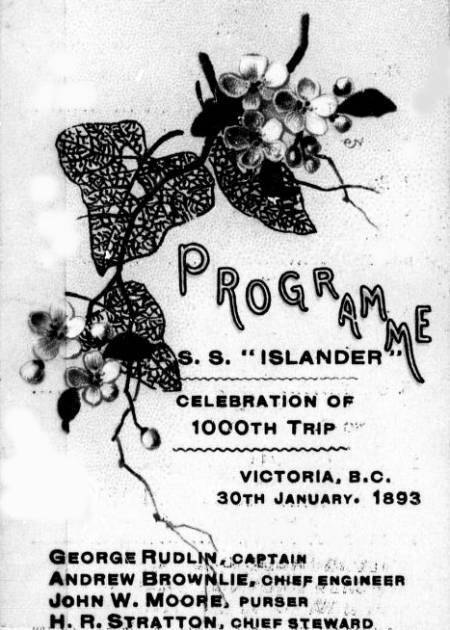
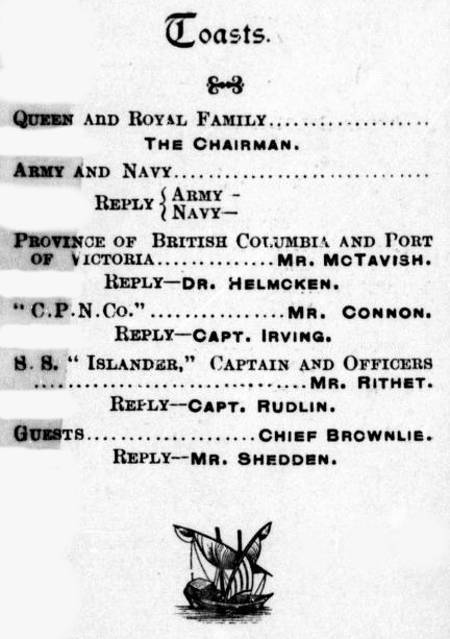
Canadian Pacific built her especially for the
Inside Passage to
Alaska run and was reputedly the most luxurious
steamer engaged on that route.
As a consequence, she was favoured by many
wealthy businessmen, speculators, bankers, railroad tycoons and the like who had
a stake in the lucrative
Klondike gold fields.
The
Historical Background

Klondike Gold Bars
As a Canadian flag
vessel, the Islander carried a disproportionately large share of the gold
bullion and dust that the Yukon's Gold Commissioner checked through his office
in Dawson.
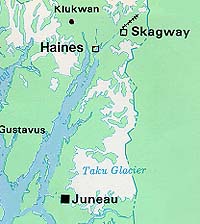
On August 14, 1901 the
Islander departed Skagway, Alaska bound for Victoria, British Columbia, filled
to capacity with passengers and a cargo of gold bullion - reportedly valued at over
$6,000,000 in 1901 dollars.
Sometime after 2:00 am in the early morning of
August 15, while transiting the narrow Lynn Canal south of Juneau, she struck
what was reported to be an iceberg that stove a large hole in her forward on the port
side. Attempts to steer the foundering vessel ashore on nearby Douglas Island
were in vain; within five minutes, the tremendous weight of water filling
the ship's forward compartments had forced her bow
underwater and her stern,
rudder and propellers completely out of the water.
After drifting for
about 15 minutes in a strong southerly outbound tide, the Islander began her
final plunge to the bottom.
Survivors clinging to
the few seaworthy lifeboats reported that a 'whoosh' of escaping air and steam
from the boilers blew the wooden upper works from the sinking ship, which rained
down upon the horrified
passengers in a hail of splinters and debris. The
witnesses further reported that the Islander broke amidships before the
once-proud steamer slipped beneath the seas to her final resting place in 175
feet of frigid
water. In addition to the
financial blow, the Islander disaster claimed numerous prominent victims, among
them Mrs. James H. Ross and her daughter, the wife and child of the
Commissioner, the highest government
official in the Yukon Territory; Charles
Keating, a multimillionaire and Director of the Commerce Bank of Canada, with
two of his sons; and Peter Warren Bell, a retired senior officer of the Hudson
Bay Company, who
was in the Yukon on personal business for a confidant of
England's King Edward VII.
Salvage
Efforts: 1901-1934
No sooner had the
Islander sunk than efforts to locate the shipwreck began. Within days, her
sister ship, the Haling, was sounding the uncharted bottom in order to determine
the depth of the sunken liner. The first
attempt to find the Islander was a
failure, but within one year, Henry Finch, a seasoned deep sea diver with 40
years underwater experience, was on the Lynn Canal dragging the bottom for the
sunken hull. He
eventually located the hull in 1902 but was not able to progress
further at that time with an actual salvage effort. In 1904, equipped with a
newly designed barge and diving bell, the tenacious Finch succeeded in
relocating the shipwreck in 175 feet of frigid water. Peering into the black
abyss from a primitive diving bell, Finch reported a "gaping hole" in the
Islander's bow. Unfortunately, the salvors did not have the ability to
grapple
the wreck with sufficient strength to gain access to the reputed location of the
gold bullion in the Purser's Office amidships. As a consequence, only a piece of
the Islander's deck rail and grating were
recovered that year. In spite of his
frustration, Finch could never forget the tantalizing lure of the vast
shipwrecked treasure. Over the next 25 years, a seemingly never-ending
procession of bold professional
salvors pitted themselves against the formidable
challenge of the Islander. Each of these well financed operations succeeded in
reaching the sunken liner, but none was able to penetrate her hold or recover
any of
the gold cargo. The adverse conditions of poor weather topside, nearly
nonexistent visibility, powerful currents and extremely cold temperature
notwithstanding, salvage from such depths was virtually unheard of
in those
days. Nevertheless, at least a dozen separate salvage ventures were attempted
during 21 different seasons. In 1929 the Willey group teamed with Frank Curtis,
a professional house mover with extensive
experience in transporting large
structures. Their plan was to string 20 sturdy steel cables beneath the sunken
liner that were connected to surface vessels. The cables were cinched up with
each low tide, enabling
the shipwreck to be inched toward shore with each high
tide. This grueling operation took two full salvage seasons until, on July 20,
1934, the Islander once again broke the surface near Green's Cove, Admiralty
Island, Alaska.
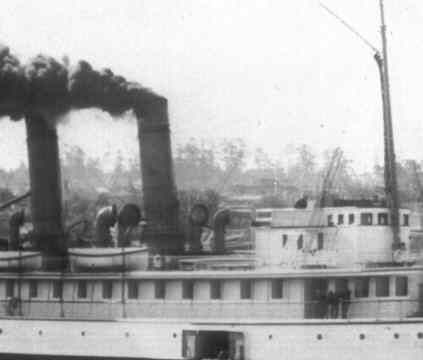
The Curtis-Willey
group had performed the near impossible: bringing up from 175 feet of icy water
three-quarters of the passenger liner. The "gaping hole" first noted nearly 30
years earlier turned out to be far
more significant: 60 of the Islander's 240
feet, its bow section, including the Mail and Storage Room, had been sheared off
completely. Still, it was the Purser's Office in the center of the vessel where
they expected
to find the bulk of the Islander's golden treasure. For the rest
of the short Alaskan summer, the Curtis-Willey crew raked decades of accumulated
muck and encrustation from the skeletal remains of the once proud
steamer.
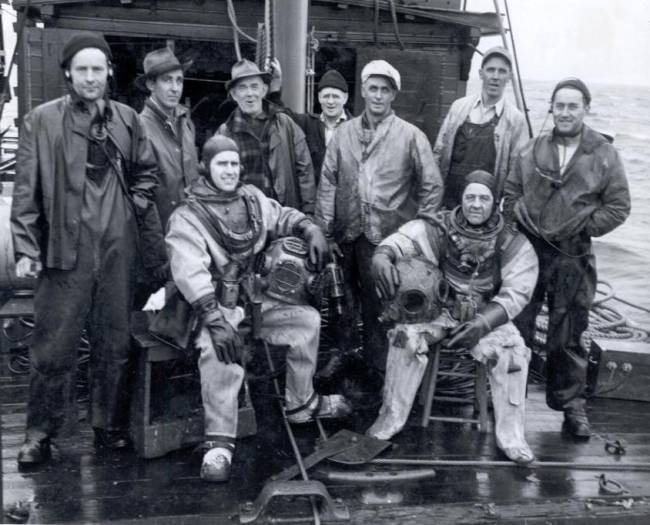
In the cruelest of
disappointments, however, the Islander would yield the paltry sum of $75,000.00
worth of gold nuggets and dust. When cleared of muck, the long anticipated
Purser's Office proved to be a truly bitter washout: none of the reputed
ironbound strong boxes of bullion ingots were found; its safe contained a
handful of U.S. $10.00 and $20.00 gold pieces and a stack of rancid U.S. and
Canadian paper currency. After 33 years of virtual nonstop, back-and-spirit
breaking toil, the Islander, having been laboriously wrenched from her frozen
tomb, had the last laugh: her priceless tons of gold bullion lay undisturbed on
the bottom of Lynn Canal, still ensconced in the Mail and Storage Room, in the
unrecovered bow of the shipwreck.
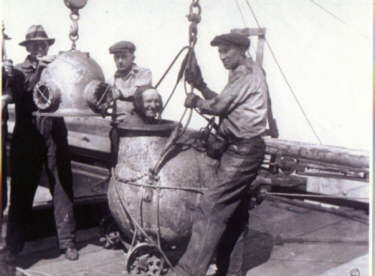
"One breath from death!" diving machine c1934
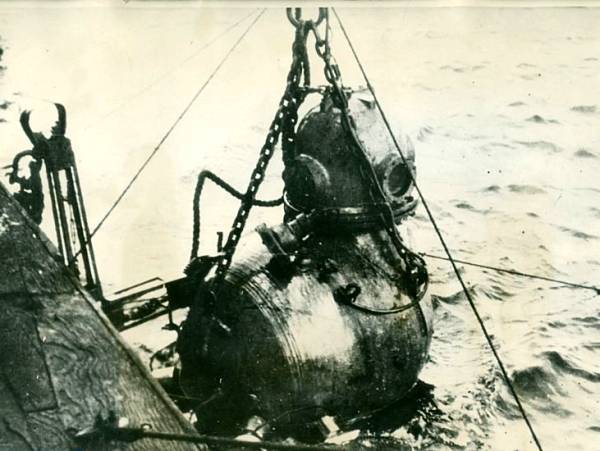
Lower away!
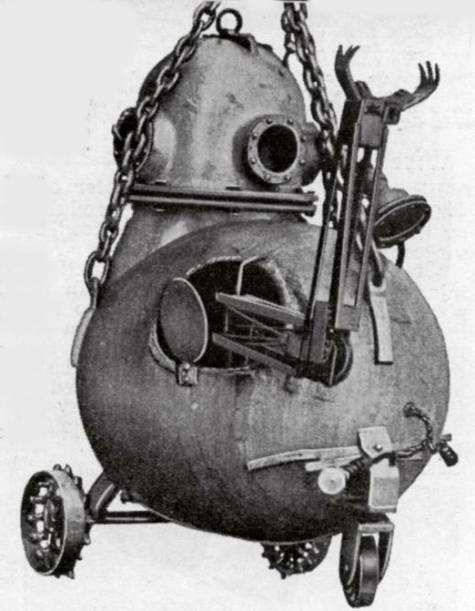
Popular Mechanics Magazine drawing of the c1934
Curtis-Wiley diving machine
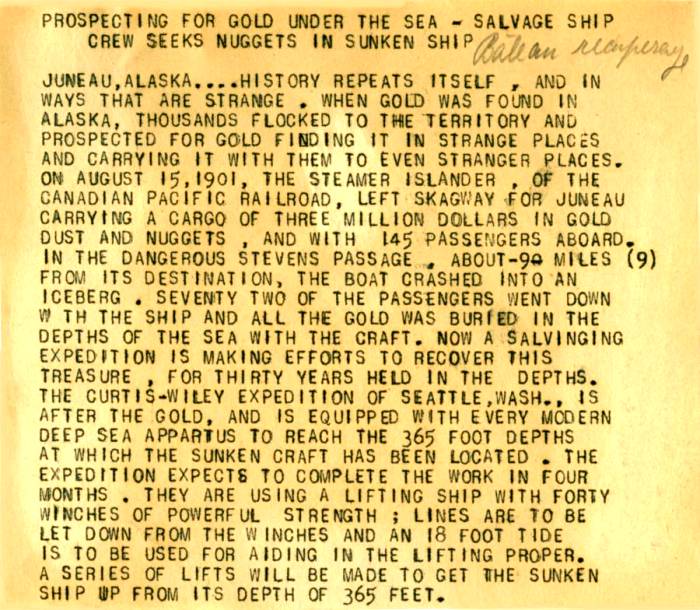
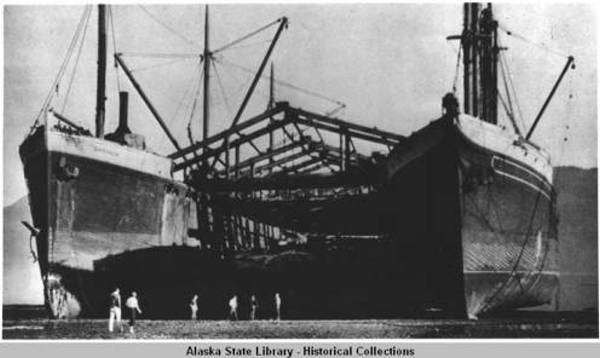
Islander between the Griffson and Forest Pride in
1934

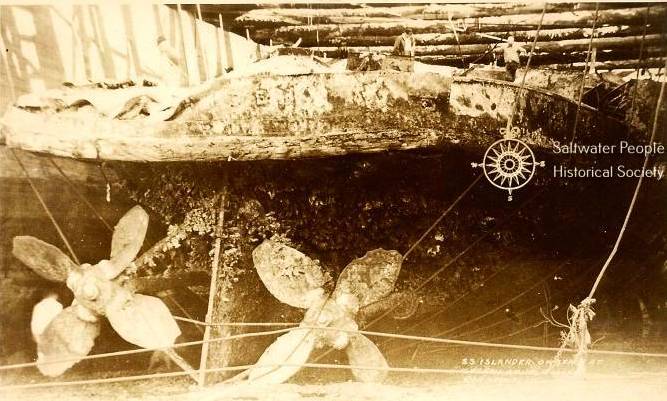
Islander beached on Admiralty island in 1934

Washing out the silt and gravel in search of the elusive gold ore in concentrate
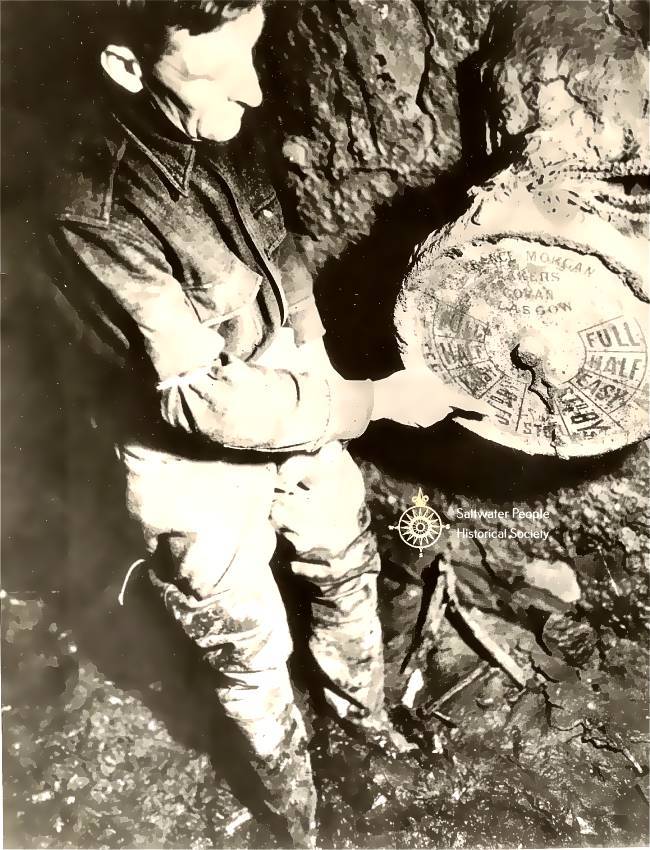
The Engine Room Telegraph.
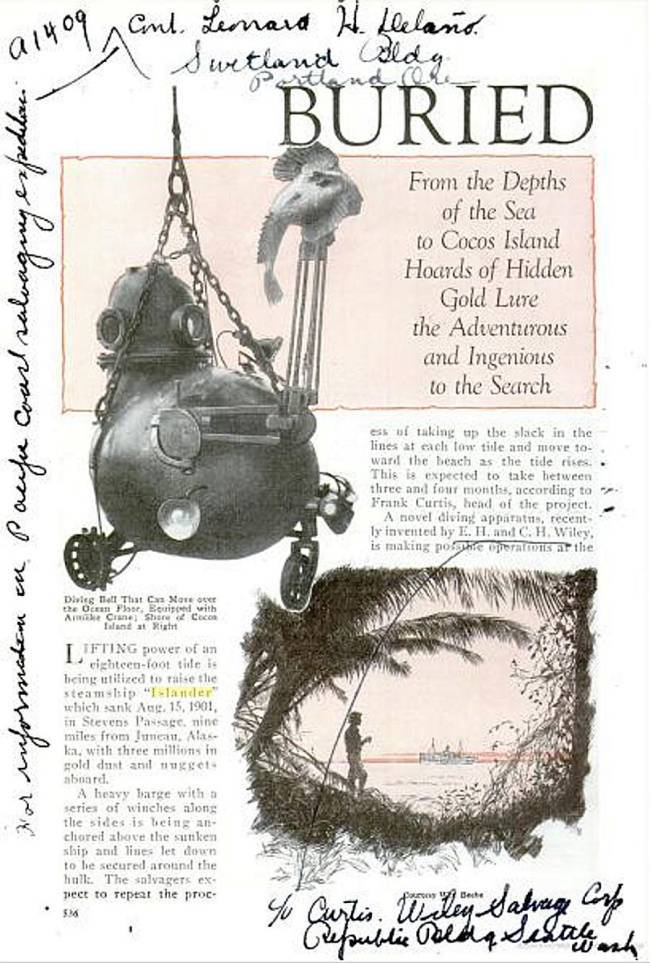
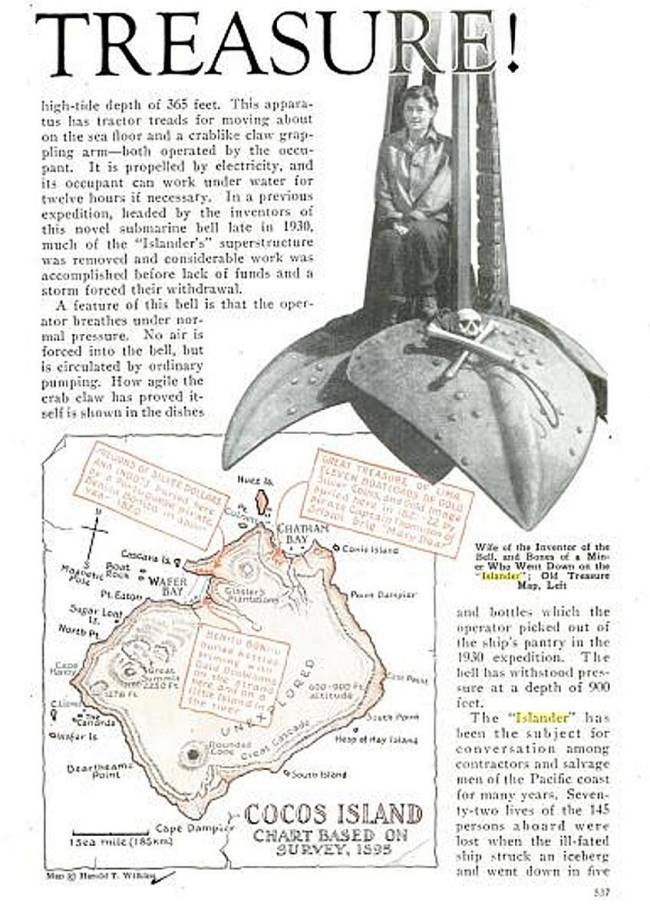
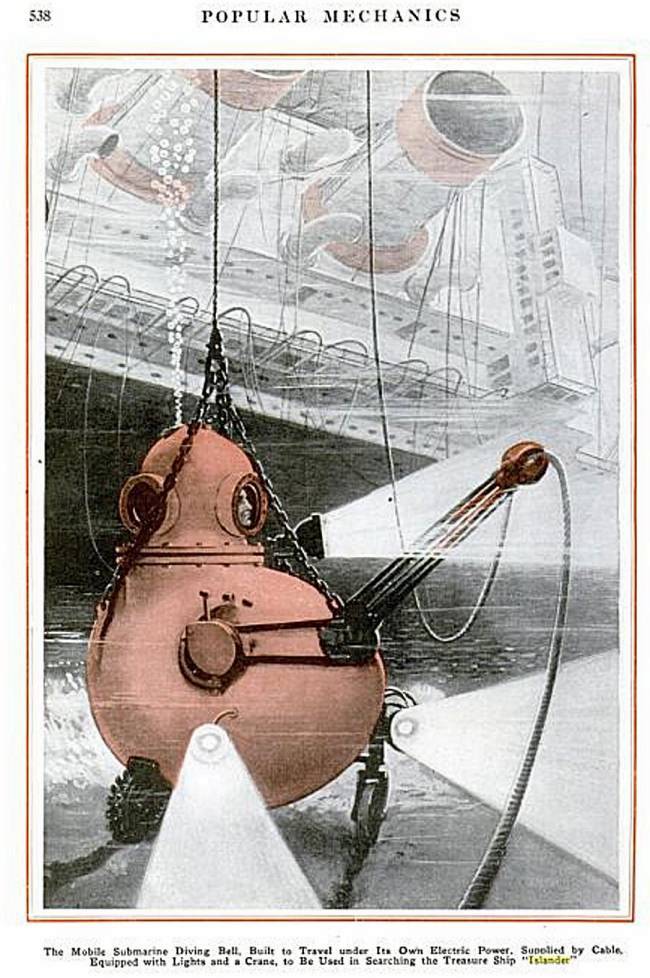
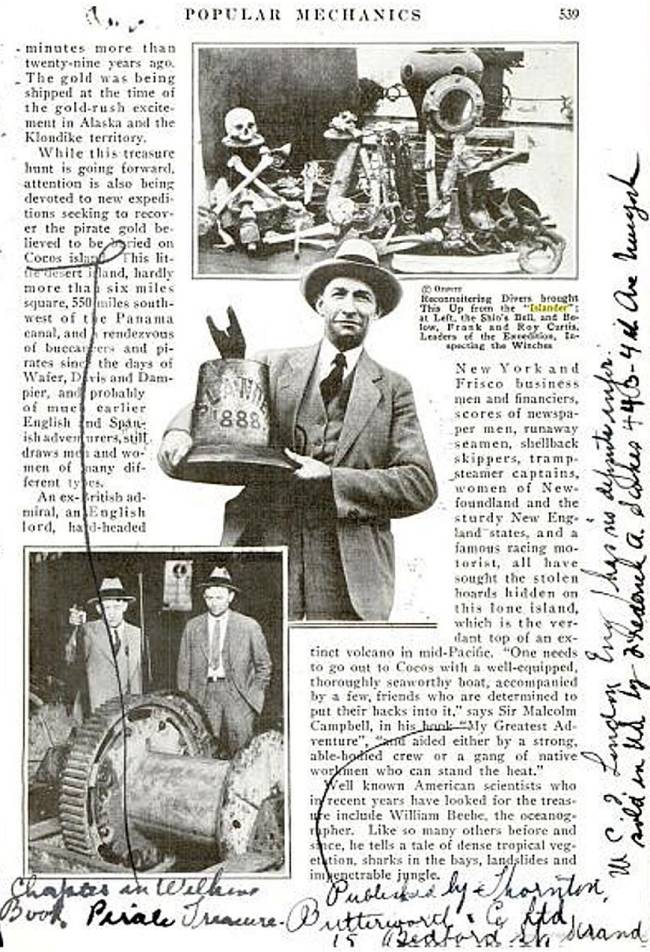
The above pages from Popular
Mechanics were kindly sent to me by J.S.Bech of The Rebreather Website
http://www.therebreathersite.nl/12_Atmospheric%20Diving%20Suits/1933_Carl%20Wiley/Carl_Wiley.html
Salvage Efforts 1996
In a 2007 filing, Ocean Mar said its research had indicated
that at least six tons of gold bullion in 25 to 30 wooden boxes was stored in a
passenger cabin. It also said it had found what it believed to be bullion boxes
near shore, no deeper than 200 feet.
In 1996, OceanMar Inc. of Seattle raised
capital in the USA and the UK to charter a suitable vessel and mount a salvage
expedition equipped with an extensive sidescan sonar suite, and a "Surveyor"
Remotely Operated Vehicle.
On their arrival at Juneau, the expedition's
ship, the MV Jolly Roger, was boarded by a US Deputy Marshal, and the
expedition was served with a Temporary Restraining Order, obtained by a rival
salvage company, Yukon Recovery of Seattle. Yukon Recovery claimed rights to the
wreck on the grounds that they had salvaged a light fitting and a bottle, under
the Abandoned Shipwrecks Act. OceanMar, who had extensively researched
Islander asserted that the wreck had never been abandoned and their Salvage
Agreement which was with the original insurers consequently took precedence.
OceanMar were also able to show that they had located the bow section long
before Yukon appeared on the scene.
A meeting in Anchorage with a
judge who was an expert in maritime law resulted in OceanMar being granted
permission to survey and video the wreck site, on the strict understanding
that nothing was to be removed from the wreck.
Jolly Roger and her crew spent the
following five weeks recording every aspect of the bow section and
side-scanning the debris field lying between the original point of impact
and the ship's final resting place. Islander's bow section was
located on the 95th anniversary of the sinking, almost to the hour.
OceanMar then found themselves involved in
four years of legal action with Yukon Recovery, resulting in the United
States courts of appeals finding in favour of OceanMar on 7 March 2000.
In 2004, the company was still trying to
raise the capital needed to mount a new salvage effort.
SS Islander Bow Section
Wreck Site, August 1996

Sonar Image of Bow Section, 0235 hrs 15th
August 1996
95 years to the hour and day since her
sinking.....
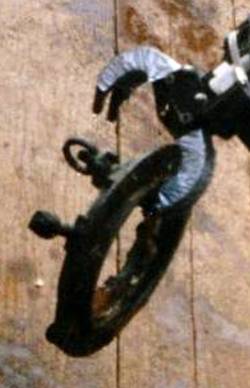
SS Islander Bow Section Porthole August
1996
Retrieved and returned to wrecksite again after positive
identification.
Ted Jaynes and the US Crew August 1996
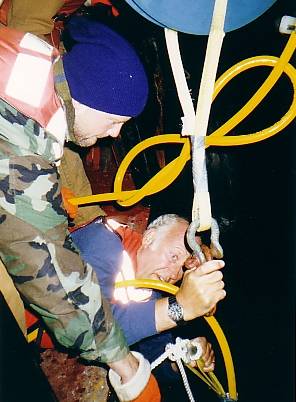
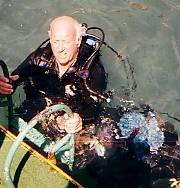
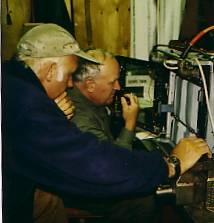
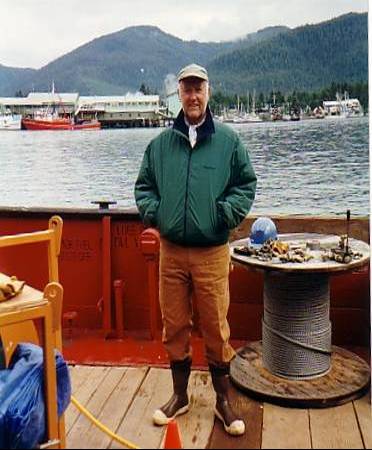
Nick M - ROV Umbilical snarl-up; Diving;
Sidescan; On Deck at Juneau
The Saga Continues:
In February 2002, OceanMar and IUC joined
forces in order to continue salvaging the SS Islander’s bow section, using IUC
's Aloha
- but then a serious mishap occurred:-
Transocean Sedco Forex
Reports Rescue of Crew of Survey-and-Recovery Vessel ALOHA
HOUSTON, Feb 8, 2002 (BUSINESS
WIRE) -- Transocean Sedco Forex Inc. (NYSE:RIG) today announced that its
drillship, Peregrine III, has safely rescued the nine-member crew of the
survey-and-recovery vessel ALOHA, which was lost at sea about 100 nautical miles
northeast of Cozumel while under way to a historical and bullion wreck. The
ALOHA reported that it had lost power and was taking on water on Thursday,
February 7. Also responding were a German container vessel, MV Libra Houston,
and a Norwegian cruise ship, Rhapsody At Sea. The ALOHA crewmembers, including
four U.S. citizens and five Philipinos, were taken aboard the Peregrine III from
an ALOHA life raft. No medical problems were reported among the rescued
crewmembers.
The ALOHA, a dynamically positioned ROV (remotely operated
vehicle) survey ship, belongs to Deepsea International (DSI). "As the managing
director of DSI, I am sorry to see the loss of our ALOHA, grateful for the
spared lives of its crew, and proud to be a stockholder of Transocean Sedco
Forex, a company we owe a great deal of gratitude in responding to our
situation," said Eric Galerne, who was onboard the ALOHA and is now aboard the
Peregrine III. Captain Mike Moore, Chief of Search and Rescue for the Seventh
U.S. Coast Guard District in Miami, wrote in an email to Peregrine III Captain
Ron MacDonald: "You and your crew are commended for the humanitarian assistance
displayed during your rescue of nine crewmembers from the research vessel ALOHA
... Your quick recovery of the survivors and timely notification to Coast Guard
rescue coordinators resulted in saving nine lives. The professional actions
demonstrated by you and your crew are appreciated. Well done." Added Tim Juran,
North America Region Manager for Transocean Sedco Forex: "We are, indeed, proud
of Captain MacDonald and the well-trained Peregrine III crew for helping avert
the loss of life at sea." Transocean Sedco Forex Inc. is the world's largest
offshore drilling contractor with more than 160 fully or partially owned or
operated mobile offshore drilling units, inland drilling barges and other assets
utilized in the support of offshore drilling activities worldwide. The company's
mobile offshore drilling fleet is considered one of the most modern and
versatile in the world with 31 high-specification semisubmersibles and
drillships, 29 other semisubmersibles and one drillship (other floaters), and 54
jackup drilling rigs, of which 28 are located in the U.S. Gulf of Mexico.
Transocean Sedco Forex specializes in technically demanding segments of the
offshore drilling business, including industry-leading positions in deepwater
and harsh environment drilling services. With a current equity market
capitalization in excess of $9 billion, the company's ordinary shares are traded
on the New York Stock Exchange under the symbol "RIG."
Transocean Sedco Forex Reports
Rescue of Crew of Survey-and-Recovery Vessel ALOHA
HOUSTON, Feb 8, 2002 (BUSINESS
WIRE) -- Transocean Sedco Forex Inc. (NYSE:RIG) today announced that its
drillship, Peregrine III, has safely rescued the nine-member crew of the
survey-and-recovery vessel ALOHA, which was lost at sea about 100 nautical miles
northeast of Cozumel while under way to a historical and bullion wreck. The
ALOHA reported that it had lost power and was taking on water on Thursday,
February 7. Also responding were a German container vessel, MV Libra Houston,
and a Norwegian cruise ship, Rhapsody At Sea. The ALOHA crewmembers, including
four U.S. citizens and five Philipinos, were taken aboard the Peregrine III from
an ALOHA life raft. No medical problems were reported among the rescued
crewmembers.
The ALOHA, a dynamically
positioned ROV (remotely operated vehicle) survey ship, belongs to Deepsea
International (DSI). "As the managing director of DSI, I am sorry to see the
loss of our ALOHA, grateful for the spared lives of its crew, and proud to be a
stockholder of Transocean Sedco Forex, a company we owe a great deal of
gratitude in responding to our situation," said Eric Galerne, who was onboard
the ALOHA and is now aboard the Peregrine III.
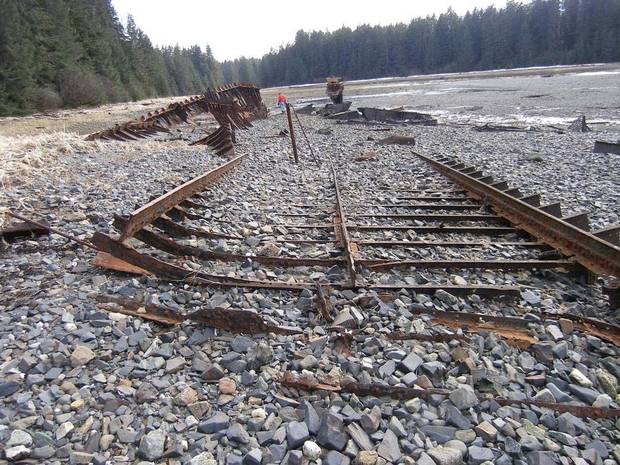
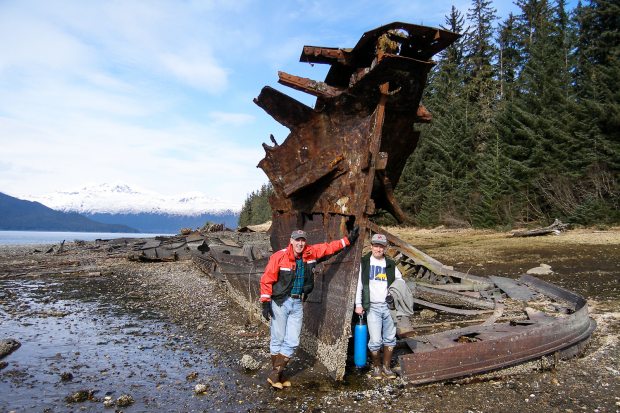
From the June 18th 2012 - Alaska
Dispatch
"The Alaska Office of History and
Archaeology estimates there could be as many as 3,000 shipwrecks lining the
state’s 44,000 miles of coastline. Now, the multi-million-dollar mystery behind
one of those wrecks may finally be answered, when a Seattle-based company
attempts to salvage the remains of the SS Islander, which sank in 1901 while
carrying Klondike gold rushers – and, reportedly, lots of their gold -- from
Skagway to the city of Victoria in British Columbia. A federal judge in April
declared that Ocean Mar, Inc. and its president, 62-year-old Theodore Jaynes,
could move ahead with plans to survey and possibly salvage the
more-than-century-old shipwreck. The decision ended more than a decade of legal
wrangling over the salvage rights to the ship, and could finally answer the
question of just how much -- if any -- gold remains on the sea floor where the
SS Islander sank in Southeast Alaska. But there’s more to this story about how a
luxury ferry -- built in Scotland and considered “unsinkable” by some -- found
its way to Alaska, and then to the seabed off of Alaska’s Admiralty Island.
Along with the ship, about 40 people met their fate on an August night at the
beginning of the 20th century......
http://www.alaskadispatch.com/article/crew-will-attempt-recover-millions-southeast-alaska-shipwreck
2016
In February, gold recovered from
the shipwreck back in 2012 went on sale for $4 million, while the Alaska State
Museum is getting an influx of new artefacts raised from the watery depths
during the 2012 recovery effort. Two Washington State companies, OceanMar and MK
Salvage Venture, worked together to resurrect the materials in a month's long
effort that involved a massive 'claw' pulling the 85lb treasure chest - among
other items - up out of the depths. The first gold was found on Labor Day
2012. The Reno, Nevada-based gold sales and consulting company Holabird Western
Americana Collections is the agent for OceanMar, working to sell the gold. "It's
a unique treasure and represents an incredible educational opportunity," said
Fred Holabird, owner of the collector company. Inside the chest were leather
bags, called 'pokes', weighing about 200 ounces each and full of gold that
probably came from Nome and totalled about 1,200 ounces, Holabird said. "When it
sank, the ship could also have been carrying gold from Dawson, Yukon, or
elsewhere."
Thursday, January 17, 2013 Courthouse News.
SEATTLE (CN) - Two companies sued each other over rights and technology used in
an effort to recover "hundreds of pounds of gold" lost in a 1901 shipwreck.
The SS Islander sank near Juneau, Alaska in 1901, killing 40
passengers, according to the two federal complaints. The ship was believed to be
transporting "hundreds of pounds of gold" from the Klondike to Seattle and San
Francisco. Salvagers say that if there were gold on board, it would likely be
"single gold bars and boxes of gold bars" buried under as much as 8 feet of
silt.
MK Salvage Venture LLC, of Seattle, sued Tetra Tech EC, a
New Jersey corporation with offices in Seattle, in one complaint. Tetra Tech
returned the favor in its complaint
against MK Salvage.
MK Salvage Venture, preparing to recover artifacts and
treasure from the Islander, hired Tetra Tech to do technical work for the
operation.
Tetra Tech claims MK Salvage refused to pay it $630,200 for
data analysis and survey work. Tetra Tech sued for breach of contract, claiming
it "fully completed the scope of work and otherwise fully performed all
services."
Tetra Tech claims it also is entitled to $175,000 if it
documents and recovers at least 137 pounds of gold.
MK Salvage sued for fraudulent inducement, claiming Tetra
Tech made false statements about its technology, including its "inability to
detect gold bars and its inability to detect boxes of gold bars that were
wrapped in iron strap."
MK Salvage claims that it "repeatedly and specifically
sought confirmation from Tetra Tech that it guaranteed its technology would
detect non-ferrous materials up to 8 feet under the silt."
Tetra Tech technicians later disclosed the maximum detection
capability of their equipment was only 3˝ feet and "they were dubious about
their technology having the ability to detect a bar of gold in any depth of
sediments," MK Salvage says in its complaint.
MK Salvage claims it lost two months of excavation time due
to Tetra Tech's failed technology and spent several hundred thousands of
dollars, "which MK Salvage would not have spent but for having relied on the
guarantees and misrepresentations of Tetra Tech and compensating for Tetra
Tech's misrepresentations."
MK Salvage claims it doesn't owe Tetra Tech anything and
wants punitive damages for fraudulent inducement, breach of faith, breach of
agreement and negligent misrepresentation.
MK Salvage is represented by Stephen Vanderhoef, with
Cairncross & Hempelmann.
Tetra Tech is represented by Mark Beard, with Lane Powell.
This dispute relates
to certain remote operated vehicles (ROVs) provided by the plaintiff, SeaTrepid
International, LLC, a Louisiana underwater engineering firm, to assist in a
salvage operation on a shipwreck site off the coast of Juneau, Alaska. The
defendants are: (1) MK Salvage Venture, LLC ("MK Venture"); (2) MK Pacific, LLC
("MK Pacific"); (3) Bear Trading Enterprises, LLC ("Bear Trading"); (4) Michelle
Ridgeway ("Ridgeway"); and (5) Oceanus Alaska. Each of the three limited
liability companies was organized in the state of Washington, and the members of
each are citizens of the state of Washington. Ridgeway is a citizen of Alaska,
and Oceanus Alaska is her solely-owned business.
Plaintiff filed suit
in the Twenty-First Judicial District Court, Parish of Tangipahoa, alleging that
the defendants: (1) breached a written lease agreement (for the lease of one
Mohawk ROV) (the "Mohawk Lease"), an oral lease agreement (for two Outland
ROVs), and several other oral and email agreements (e.g., alleged
agreements to use only a qualified ROV pilot, to pay for the two lost Outland
ROVs, and to pay for a SeaTrepid technician mobilized to the site); (2)
negligently caused the loss of the two Outland ROVs; and (3) converted the
salvaged Outland ROV (the other Outland ROV was not recovered). Defendants MK
Salvage, MK Pacific, and Bear Trading removed the case to this Court on the
bases of diversity and admiralty jurisdiction. (Rec. Docs. 1, 7).
Accordingly, for all
of the foregoing reasons,
IT IS ORDERED that
the Plaintiffs' Motion to Remand (Rec.
Doc. 8) is
hereby DENIED.
New Orleans, Louisiana, this 11th day of
March, 2013.
KURT D. ENGELHARDT, UNITED STATES DISTRICT JUDGE
A 2015 assay of a sample of the gold recovered in 2012, by American
Assay Labs in
Sparks, Nev., indicated the fineness of the gold at .800 fine, according to
Holabird....
The official accounting
of $275,000 in gold lost on the Islander in 1901 would reflect about 13,301 troy
ounces, today valued at about $15 million, Holabird said. Some 10 or 12 treasure
boxes containing gold must have been on the Islander. The estimate is derived
from the amount each treasure box could hold, about 85 pounds of gold, according
to Holabird.
The gold recovered in 2012 was the content of only one box, and it
was initially turned over to MK Salvage Venture LLC in Seattle, in accordance
with its court-approved financing agreement with Ocean Mar Inc. for funding
salvage operations.
Islander Bullion Partners is not the only investor group. Another set of
backers, called Islander Partners LP, dates back to the 1990s.
According
to another recent SEC filing, an entity called Douglas Island Group LLC
is entitled to about 22 percent of the Islander Bullion Partners’
payoff.
Teddy Jaynes
died of cancer -Ronnie our ROV pilot was murdered.....
© Commander Nick Messinger RD* FNI RNR - Master Mariner
- Galbraith Wrightson Senior Research Fellow
www.pandosnco.co.uk



















































